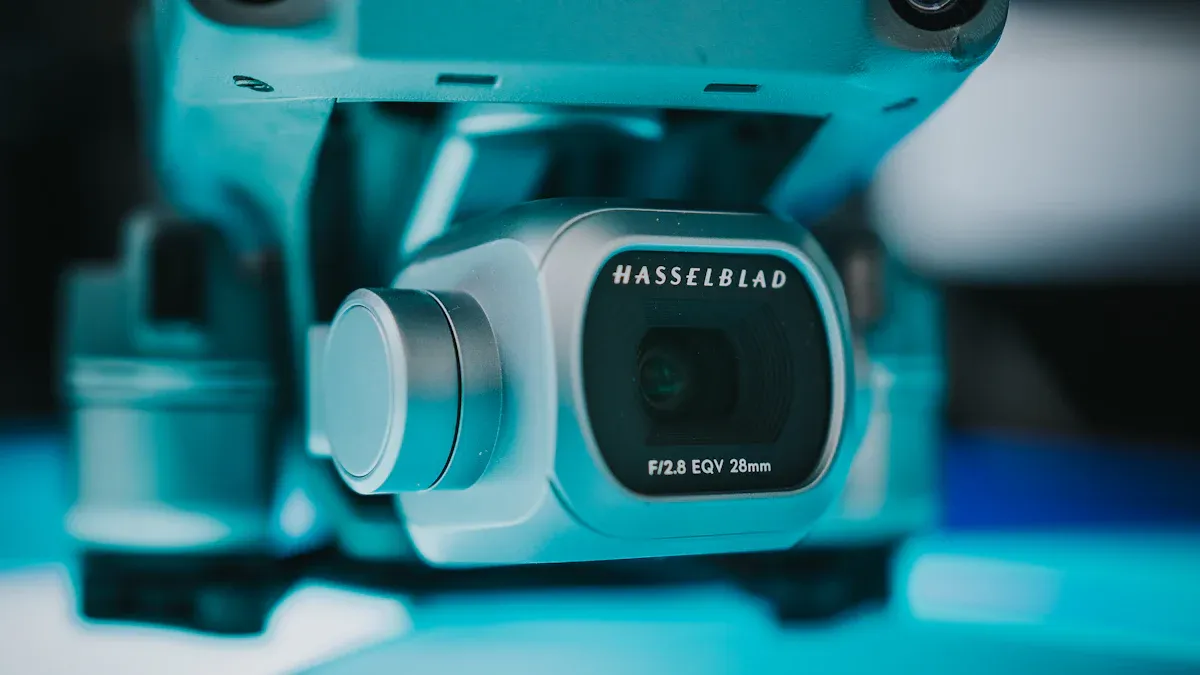
Here are the top 7 choices for thermal drones in 2025:
DJI Mavic 3T – Good for quick use and fast checks.
Autel EVO Max 4T – Works well for public safety jobs.
DJI Matrice 30T – Easy to use for industrial checks.
DJI Matrice 350 RTK – Trustworthy for mapping and surveys.
Autel EVO II Dual 640T V2 – Great for farming and watching animals.
Parrot Anafi USA – Light and good for security walks.
Skydio X2E Color/Thermal – Very good for search and rescue by itself.
More companies use a drone with thermal camera now. Real-time temperature data helps with security, checks, and rescue work. In 2025, North America is the leader, but Asia Pacific is growing fast. The global thermal drone market will reach $7.92 billion this year and keeps getting bigger.
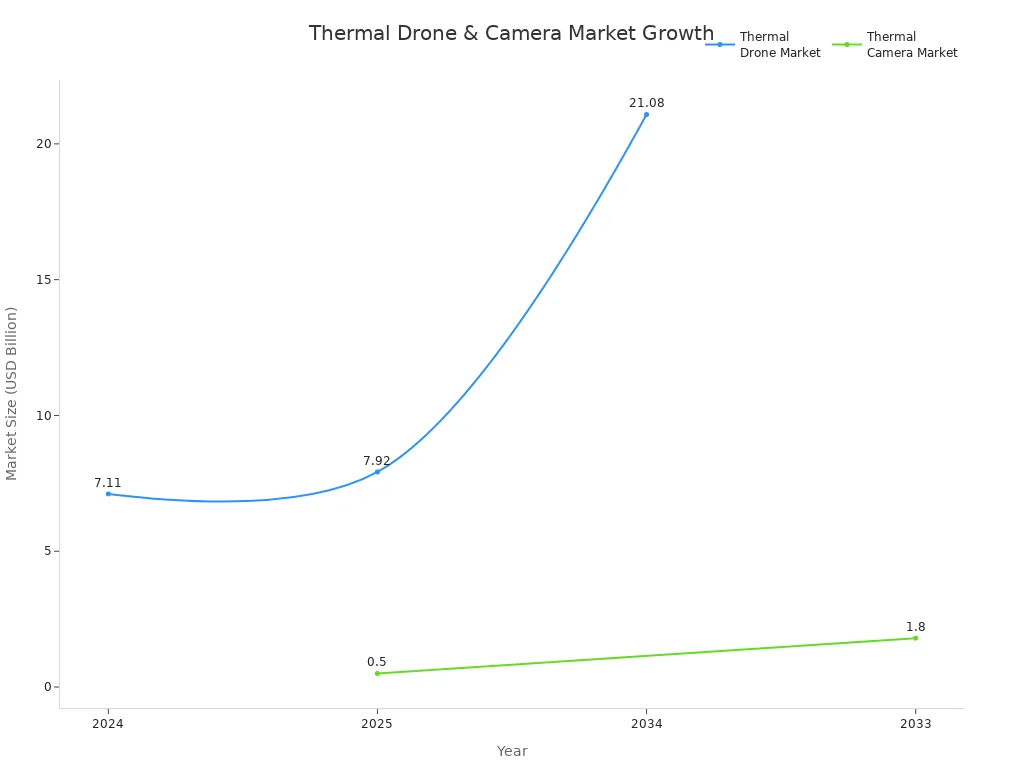
If you want the best thermal drones for your work, these top thermal drones have smart sensors, AI-powered tools, and strong results in many fields.
Key Takeaways
Thermal drones have cameras that can see heat. They help find problems that normal cameras miss. These drones work well at night and in fog. They also work in bad weather. This makes them good for rescue, inspections, and security. When buying, look at camera quality and flight time. Also check if it is easy to use and the price. Some drones are light and fast. Others are strong and can fly longer. Some have smart tools for different jobs. Pick a drone that fits your needs and budget. This helps you work safer, faster, and smarter.
Thermal Drones
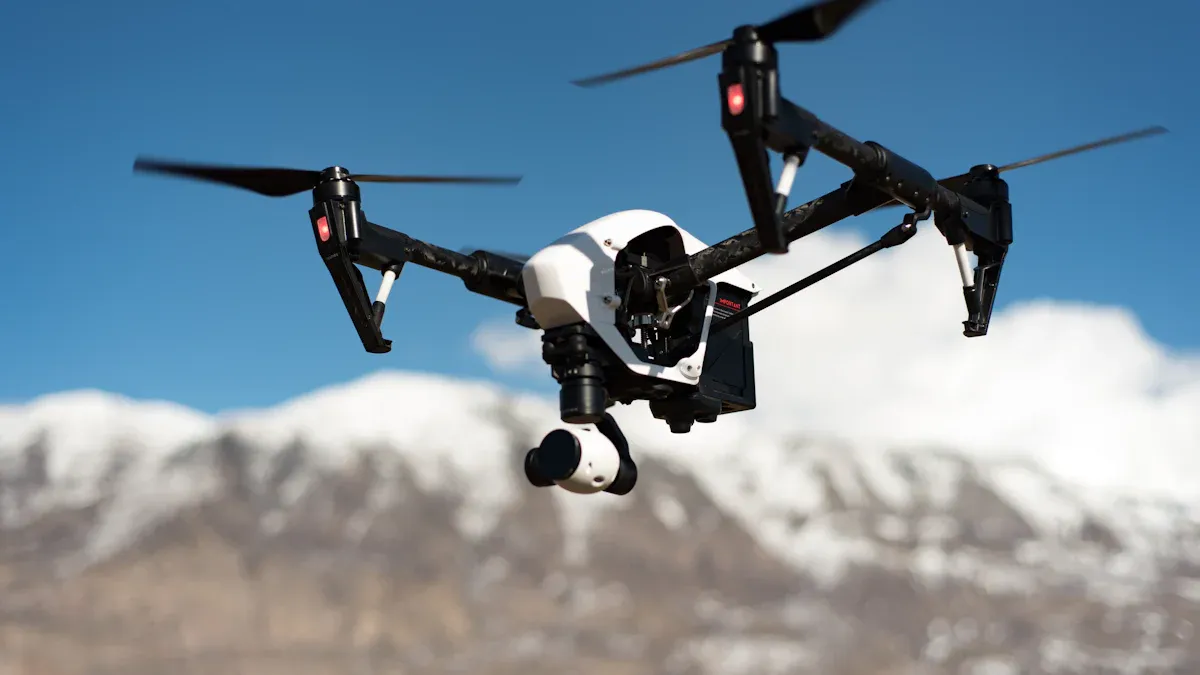
What Is a Drone with Thermal Camera
You may wonder how a drone with thermal camera is different. This kind of drone has a special sensor that finds heat, not just light. The sensor is called a thermal camera or infrared camera. It sees infrared radiation from things and makes thermal images. These images show temperature changes, so you can find problems a normal camera misses.
Thermal drones usually have their cameras on gimbals. This keeps the camera steady, even if it is windy. You get smooth and clear thermal images for better results. Thermal imaging drones must connect the camera to GPS and flight controls. This helps you collect exact, geo-tagged thermal data. These features make thermal drones more advanced than drones with only optical cameras.
Thermal imaging drones work in darkness, fog, or smoke. You do not need sunlight or clear skies to use them. This makes them great for hard jobs where you need to see heat, not just light.
Main Uses
Thermal drones have changed how many industries work. You can use a drone with thermal camera for more than just photos. Here are some main uses:
Firefighting: You can find hotspots, watch fire spread, and check damage after fires.
Search and rescue: You can find missing people by seeing body heat, even at night or in thick woods.
Industrial inspections: You can check power lines, pipelines, and machines for overheating or problems.
Building and roof inspections: You can find leaks, heat loss, or insulation issues quickly.
Agriculture: You can watch crop health, find pests, and manage watering with thermal images.
Law enforcement and surveillance: You can track suspects or watch areas at night.
Solar panel inspections: You can find broken cells and keep systems working well.
Wildlife monitoring: You can track animals or stop poaching without bothering nature.
Tip: If you want to be safer and save time, thermal imaging drones help you see heat patterns and problems you cannot see with your eyes.
Thermal drones help you work smarter and safer. With thermal images, you can make better choices and act faster in important times.
Buying Factors
Camera and Sensor
The thermal camera and sensor are very important. You need clear pictures and correct data. Here are the main things to look for:
Field of View (FOV): This shows how much the camera can see.
Image Resolution: Higher resolution means clearer pictures and more details.
Thermal Sensitivity (NETD): Lower NETD helps the sensor see small temperature changes. This makes images better, even in bad weather.
Radiometric Capability: Some cameras give temperature data for every pixel. This helps you check things closely.
Weather Resistance: The camera should work in rain, fog, or dust.
A sensor with high resolution and low NETD gives sharper pictures. If two cameras have the same resolution, the one with better sensitivity shows more detail. This is important for inspections or rescue jobs.
Flight and Range
Flight time and range tell you how far you can go. Most thermal drones in 2025 fly for 30 to 45 minutes. Some, like the DJI Mavic 3T, can fly up to 45 minutes. The best models can go 10 to 15 kilometers.
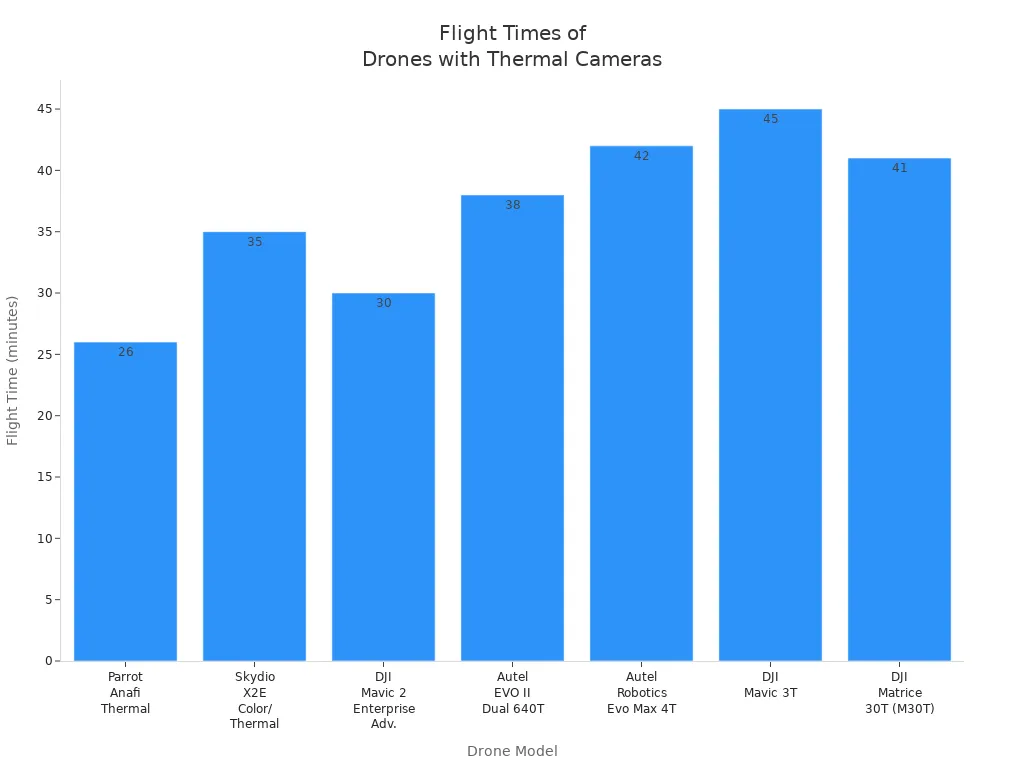
Wind and temperature can change battery life. Cold weather makes batteries run out faster. High places and strong winds also lower flight time.
Controls and Usability
You want the drone to be easy to use. This is important for teams with different skills. Many thermal drones now have smart controllers. The DJI Matrice 30T has a 7-inch touchscreen and quick buttons. The Autel EVO II Dual 640T V3 has a bright OLED screen and works with other apps. Features like geofencing and no temperature limits on takeoff make flying safer and easier. These controls help you focus on your work, not the drone.
Price
Thermal drones cost more than normal drones. In 2025, prices go from $5,000 to over $50,000. The price depends on the camera, sensor, battery, and software. Expensive models fly longer, take better pictures, and have more features. If you only need basic thermal images, you can buy cheaper ones. For advanced jobs, you will pay more for the best sensors and extra tools.
Best Thermal Drones in 2025
Picking the best thermal drone for your business can be hard. You want a drone that takes clear thermal images. It should fly far and work in tough places. Here are the top thermal drones in 2025 to help you choose.
DJI Mavic 3T
The DJI Mavic 3T is great for quick use and pro results. It is small, easy to carry, and simple to set up. But it is strong enough for big jobs.
Feature | Specification/Description |
|---|---|
Camera Resolution | 48 MP wide-angle, 12 MP telephoto (56× hybrid zoom) |
640 × 512 pixels | |
Maximum Flight Time | Up to 45 minutes |
Maximum Range | Up to 32 kilometers |
Obstacle Avoidance | Omnidirectional with APAS 5.0, six fish-eye sensors |
RTK Accuracy | Centimeter-level positioning |
Weight | 920 grams |
Special Features | SRIZFLY tech, autonomous flight, ActiveTrack, Point of Interest |
The Mavic 3T has two thermal sensors and a sharp camera. The thermal camera gives 640 x 512 pixel images. This is good for checks and rescue jobs. The drone can fly for 45 minutes and cover 2 square kilometers. You can charge it fast with USB-C or a hub.
Pros:
Great thermal camera with alarms and color choices
Two sensors for both regular and thermal photos
Long flight time and strong in wind
Avoids obstacles from all sides
Light and easy to carry for fast use
Cons:
Lower thermal resolution than some others
Gimbal may have small problems sometimes
Rules may be strict because of its weight
Some features cost extra money
Note: DJI is popular, so you can find parts and batteries easily. This helps business buyers a lot.
Best use cases:
Use the Mavic 3T for checks, mapping, rescue, and building jobs. It is a top pick if you want fast and steady results.
Autel EVO Max 4T
If you need a drone for safety or big jobs, try the Autel EVO Max 4T. This drone has smart tools and strong cameras for your team.
The EVO Max 4T has a 640×512 pixel thermal camera. It can see a wide range of temperatures. The gimbal has four tools: wide, zoom, thermal, and a laser. It can measure from -4°F to 1022°F. It also gives alerts for hot or cold spots, which helps in emergencies.
Key features:
48MP zoom camera with 10x optical and up to 160x hybrid zoom
SLAM tech for flying where GPS does not work
720° obstacle avoidance with special sensors
Flies up to 42 minutes
IP43 rating for dust and water
A-Mesh lets many drones work together
Pros:
Great for rescue, firefighting, and checks
Can fly in fog, darkness, or low light
Keeps your data safe with strong encryption
Cons:
Bigger and heavier than some other drones
Needs more training for all features
Tip: The EVO Max 4T is best for important jobs where safety and data matter most.
Best use cases:
This drone is good for safety, rescue, mapping, and checking buildings. Teams like it for tough jobs that need a strong thermal drone.
DJI Matrice 30T
The DJI Matrice 30T is tough and folds up for easy carrying. It has three cameras, including a 48MP zoom and a big thermal sensor.
Feature / Specification | Details / Advantages |
|---|---|
Camera Payload | 48MP zoom, large thermal camera, laser rangefinder |
Thermal Sensor | 640×512 resolution, ±2°C accuracy |
Flight Time | Up to 41 minutes |
Ruggedness | IP55 water and dust resistance |
Portability | Folding design, fits in a small case |
Battery System | Hot-swappable, up to 6 hours operational time with external battery |
Software | Advanced autonomous flight, programmable missions |
You can fly the Matrice 30T in rain, dust, or at night. It can mark and share exact spots. The battery can be swapped fast, so you do not wait long.
Pros:
Three cameras for many types of checks
Thermal sensor gives very correct readings
Tough and easy to carry
Smart flight modes for hard jobs
Cons:
Wide camera is only 12MP
Some smart features are limited
Obstacle sensors can be too sensitive
Note: If you need a tough drone for bad weather, the Matrice 30T is a good pick.
Best use cases:
This drone is best for checks, rescue, and utility jobs. Teams like it for rough weather and hard work.
DJI Matrice 350 RTK
The DJI Matrice 350 RTK is strong for mapping, surveys, and rescue. It can carry many tools, like the Zenmuse H20T with a thermal camera.
Sensor Type | Specifications and Features |
|---|---|
Zoom Camera | 20MP, 20x hybrid zoom (up to 200x max), 4K video |
Wide-Angle Camera | 12MP, 82.9° FOV |
Thermal Camera | 640×512 radiometric, spot metering, area measurements, color palettes |
Laser Rangefinder | 3m to 1200m, ±0.2m accuracy |
Flight Time | Up to 55 minutes per flight |
Environmental Rating | IP44, -20°C to 50°C operation |
Positioning | RTK for centimeter-level accuracy |
Payloads | Supports up to three at once |
The Matrice 350 RTK can fly for 55 minutes, which is very long. Its RTK system gives very exact location, which is great for maps and surveys.
Pros:
Longest flight time in this group
Can carry many tools, even two thermal sensors
Tough for bad weather
Good at avoiding obstacles and stable in flight
Cons:
Bigger and heavier than most drones
Costs more money
Needs more training to use everything
Note: Rescue teams like this drone for its trust and data accuracy.
Best use cases:
Use the Matrice 350 RTK for maps, surveys, rescue, and checking big sites. It is best for big and exact jobs.
Autel EVO II Dual 640T V2
The Autel EVO II Dual 640T V2 is good for farms, animal watching, and checks. It has a sharp thermal sensor and a strong camera in a small drone.
Specification / Feature | Details |
|---|---|
Thermal Sensor | 640×512 radiometric (InfiRay) |
Visual Camera | 8K, 50MP sensor |
Thermal Zoom | 16× digital zoom |
Flight Time | |
Obstacle Avoidance | 360° with 12 sensors |
Transmission Range | Up to 8 miles (13 km) |
Controller | 7.9-inch 2000-nit smart display |
Modular Accessories | RTK, loudspeakers, strobes, spotlight |
You can check temperatures live and set alarms for hot or cold spots. The drone uses AI and can fly by itself over big areas. You can add tools for different jobs.
Pros:
Sharp thermal and regular cameras
Long flight time and strong in wind
Can add parts for business use
Easy smart controller
Cons:
Shorter range than some DJI drones
Heavier than hobby drones
Tip: The EVO II Dual 640T V2 is best for close checks and watching nature.
Best use cases:
Use this drone for farms, animal tracking, safety, and checks. Police and rescue teams also like it.
Parrot Anafi USA
If you want a light drone for patrols or quick checks, try the Parrot Anafi USA. It is easy to carry and use, so teams can move fast.
Feature | Details |
|---|---|
Thermal Sensor | |
Thermal Resolution | 320 x 256 px |
Digital Zoom | 32x |
Flight Time | |
IP Rating | IP53 (dust and rain resistant) |
Weight | 500 g (1.10 lb) |
Operating Temp Range | -36°C to +50°C |
Autonomous Flight | Yes (geofencing, Return-to-Home) |
You can launch the Anafi USA in less than a minute. It folds up and fits anywhere. It works in hot, cold, dust, or rain. The FLIR camera helps you see heat at night.
Pros:
Very light and easy to carry
Fast to use for urgent jobs
No limits on where you can fly
Simple controls and easy software
Cons:
Lower thermal resolution than some others
No sensors to avoid obstacles
Note: The Anafi USA is best for teams who need speed and easy use.
Best use cases:
This drone is good for patrols, rescue, police, and fast checks. It is also good for teaching new pilots.
Skydio X2E Color/Thermal
The Skydio X2E Color/Thermal is great if you want a drone that flies itself and avoids things with AI. It has two sensors: a 12MP color camera and a FLIR 320×256 thermal sensor.
Feature / Advantage | Details / Description |
|---|---|
Dual-sensor payload | 12MP color + FLIR 320×256 thermal sensor |
Flight time | |
Wireless range | Up to 6 km (3.7 miles) |
Autonomy | |
Design | Rugged, foldable, portable |
Cybersecurity | AES-128 encryption, enterprise-grade security |
Imaging capabilities | High-quality color and thermal imaging |
Software integration | Skydio 3D Scan for digital inspections |
The Skydio X2E can fly tricky paths by itself. This lets you focus on your job. Its smart flying and obstacle sensors keep it safe in tight spots.
Pros:
AI flying means less training for pilots
Two thermal sensors for close checks
Tough and easy to carry
Strong security for your data
Cons:
Lower thermal resolution than bigger drones
Shorter range than some others
Tip: The Skydio X2E is best for rescue, checks, and public safety.
Best use cases:
Use this drone for checks, building, rescue, and safety jobs. It is great for teams who want a smart thermal drone in 2025 with little training.
When you look at these drones, you will see the best one depends on your needs. Some are easy to carry and fast, while others have the best images and smart tools. No matter your job, these best thermal drones in 2025 help you work safer and smarter.
Comparison Table
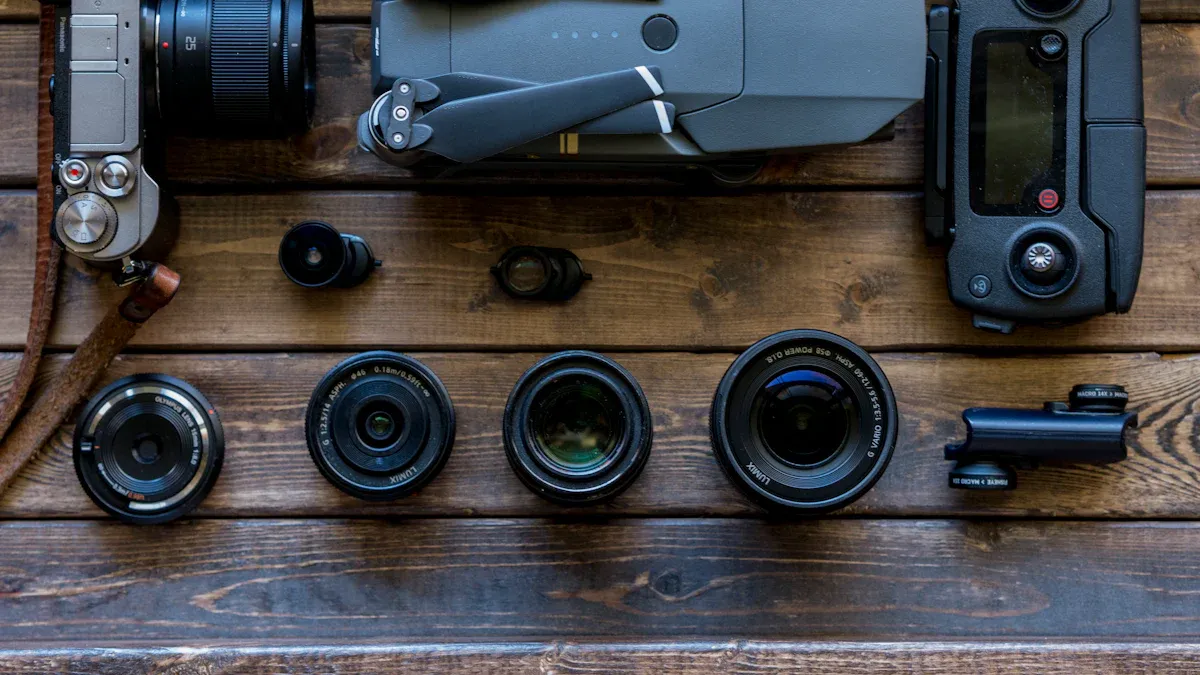
If you want to choose the right thermal drone, it helps to compare them. This table shows the main specs for each top drone. You can quickly see differences in camera, flight time, and features.
Drone Model | Thermal Camera Resolution | Visual Camera Specs | Max Flight Time | Range (km) | Weight (kg) | Key Features & Use Cases |
|---|---|---|---|---|---|---|
DJI Mavic 3T | 640×512 px (radiometric) | 48MP wide + 12MP hybrid zoom (56x) | 45 min | 15 | 0.92 | Hybrid thermal/visual, full obstacle avoidance, real-time analytics; great for fire, law, inspection |
Autel EVO Max 4T | FLIR Boson 640×512 px | 4000×3000 px | 42 min | 20 | 1.62 | Anti-jamming, 3D mapping, omnidirectional sensors; best for civil, telecom, tactical use |
DJI Matrice 30T | 640×512 px (radiometric) | Zoom (200x), wide, laser | 41 min | N/A | 3.7 | Rugged, IP55, all-weather, autonomous dock; for emergency, disaster, heavy industry |
DJI Matrice 350 RTK | 640×512 px @ 30Hz | 20MP zoom, 12MP wide | 55 min | N/A | 6.47 | Longest flight, RTK precision, multi-payload; mapping, survey, rescue |
Autel EVO II Dual 640T V2 | 640×512 px | 8K, 50MP sensor | 38–42 min | 13 | 1.19 | Modular, AI, 360° avoidance; farming, wildlife, safety |
Parrot Anafi USA | FLIR Boson 320×256 px | Dual 21MP, 32x zoom | 32 min | N/A | 0.499 | Lightweight, encrypted video, silent; urban patrol, field ops |
Skydio X2E Color/Thermal | FLIR 320×256 px | 12MP color | 35 min | 6 | 1.32 | AI flight, 360° avoidance, strong security; search, inspection, public safety |
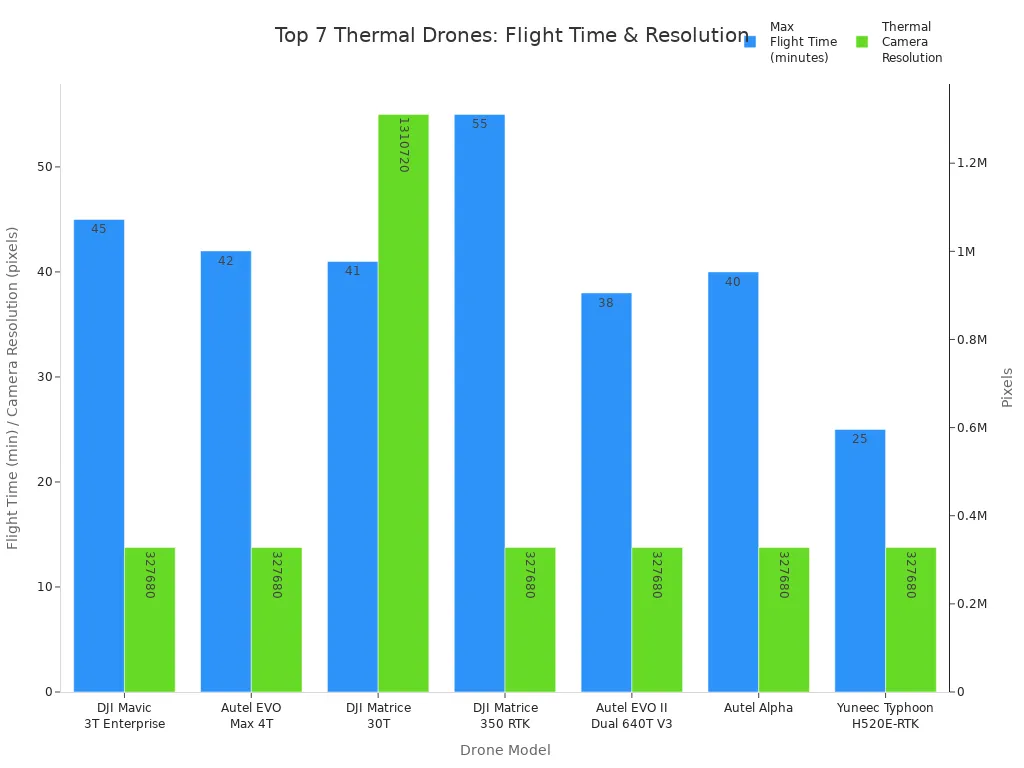
Tip: If you want a drone that flies the longest, pick the DJI Matrice 350 RTK. If you need a light drone, Parrot Anafi USA is a good choice. For the clearest thermal images, look for drones with a 640×512 px sensor.
This table helps you match your needs to the right drone. Some drones are tough and fly longer. Others have better cameras or are easier to use. Think about what is most important for your team. Then you can find the best drone for your work.
Best Thermal Drone for Your Needs
Hobbyists
If you are new or want a drone for fun, you do not need the fanciest one. You should pick a drone that is easy to fly and light to carry. The Parrot Anafi USA is a good choice for hobbyists. You can get it ready to fly very fast. It is great for learning search and rescue or trying out surveillance. The controls are simple, so you do not need much training. You can also use it to watch nature or animals if you like exploring. The price is lower than most, so it is a good deal.
Tip: Try a small drone first before you buy a bigger one for harder jobs.
Professionals
If you work in safety, security, or inspections, you need more features. The DJI Mavic 3T and Autel EVO II Dual 640T V2 are smart picks. These drones give you clear pictures, long flights, and easy controls. They help with search and rescue, firefighting, and mapping. You can use them for surveillance or checking buildings. The Mavic 3T is easy to take anywhere. The EVO II Dual 640T V2 has strong AI tools. Both help you work faster and safer.
Use the Mavic 3T for quick checks and rescue.
Try the EVO II Dual 640T V2 for farming or wildlife work.
Industrial Use
For hard jobs, you need a tough drone with advanced features. You want a drone for firefighting, rescue, and big inspections. The DJI Matrice 300 RTK is best for industrial work. It is strong, flies a long time, and has smart safety tools. Here are some top choices:
Drone Model | Durability & Environment Suitability | Flight Time | Advanced Features | Notes on Industrial Use |
|---|---|---|---|---|
DJI Matrice 300 RTK | Handles tough weather, very strong | Can carry many tools, AI, RTK, extra safety | Best for big inspections, mapping, and long flights | |
Autel EVO II Dual 640T | Rugged, good for hard jobs | 38 min | Two cameras, smart tracking, 360° avoidance | Great for firefighting and rescue |
Yuneec H520E-RTK | Stable, but not for extreme jobs | 28 min | RTK, can swap tools fast | Good for inspections, but does not fly as long |
These drones are good for big areas, mapping, and rescue. The Matrice 300 RTK is best if you need long flights and strong safety. The Autel EVO II Dual 640T is also good for firefighting or rescue. Pick the one that matches your job and budget.
You have many great thermal drones to choose from this year. If you want something light and quick, try the Parrot Anafi USA. For long flights and tough jobs, the DJI Matrice 350 RTK stands out. Need smart features? The Autel EVO Max 4T is a strong pick.
Always match your drone to your business needs and budget. Check for the latest deals and read user reviews before you buy. This helps you get the best value for your team.
FAQ
What industries use thermal drones the most?
Thermal drones are used in many jobs. They help in public safety, construction, energy, and farming. Companies use them to check things and find problems. They are good for search and rescue. They also help watch big areas. These drones make work faster and help find issues early.
How accurate are thermal cameras on drones?
Most thermal cameras on drones are pretty accurate. They can measure temperature within 2°C. Some expensive models are even better. You can trust them for checks. But for very important jobs, use ground tools too.
Do I need special training to fly a thermal drone?
You do not need a pilot’s license for simple flying. But it is smart to get some training. Many companies have short classes. Training helps you fly safely and get better data. It also helps you make fewer mistakes.
Can thermal drones fly in bad weather?
Some thermal drones can fly in rain, dust, or cold. Pick drones with high IP ratings and strong bodies. Always read the manual before flying in bad weather. Safety is always the most important thing.
How do I store and manage thermal data from my drone?
You can save thermal pictures and videos on SD cards. Some drones let you use cloud storage too. You can move your data to a computer. Use safe places to store your files. Always back up your business data to keep it safe.
See Also
The Importance Of Thermal Imaging Cameras In 2025
Using Thermal Imaging Cameras For Search And Rescue In 2025
Vanadium Oxide Thermal Cameras Designed For Rescue Missions
